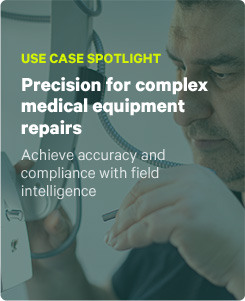At a glance:
- Field service teams can be overwhelmed by excessive data, hindering performance.
- How to uncover the essential data points that drive actionable insights.
- A proactive approach to equipment maintenance improves reliability and client satisfaction.
Today, the sheer volume of data being created worldwide is overwhelming, with some forecasts suggesting a datasphere ranging from 175 zettabytes (IDC) to 200 zettabytes (Arcserve). Client histories, equipment readings, and technician notes. This constant inflow of data holds tremendous potential, but it raises a fundamental question: how much is too much? Without the proper management management strategy, these massive stores of data—often called “data lakes”—risk becoming stagnant, offering little insight.
Olivia heads the data and analytics department for a large HVAC service company. Overwhelmed by the sheer volume of data and a lack of actionable insights, she needs a comprehensive assessment. She has first-hand experience with data overload and recognizes the need for a thorough evaluation. Though her company uses several technologies, including fleet tracking, a robust CRM system, and IIoT-enabled sensors, managing the massive amounts of data these technologies generate remains a significant challenge.
Everything takes a sudden turn one morning. Olivia’s phone rings, and the VP of Operations’ name flashes on the screen. “Olivia, I need you to drop everything and look into this situation. “We’ve lost two major clients this month, with several more looking to terminate before their next renewal. I need to know why this keeps happening, and I need to know fast.” His urgency confirms her suspicion: the overload is directly impacting the business. This is the moment Olivia awaits. It’s a call to action.
Cutting through the noise: finding data that drives results
The conversation hangs over Olivia. There’s a more significant problem here than just a single client or support ticket. A troubling picture emerges through the operational data and conversations with frontline staff. Finding insights within this chaotic tangle of data won’t be possible.
Though her staff collects dozens of data points per visit, like equipment model, serial number, and visual inspection notes, much of this data remains unused. She begins an in-depth search, determined to cut through the noise:
- Excessive sensor readings: Temperature sensors mounted incorrectly (too close to heat sources), humidity sensors in irrelevant locations, or vibration sensors with no established alert thresholds become more noise than signal.
- Bloated equipment history: Excessive notes about generic maintenance (filter replacements, etc.), outdated ownership records, and incomplete client contact information can all slow jobs.
- Technician workarounds: Olivia sees a worrying trend: skilled technicians, frustrated by the chaos, resort to duplicating essential data in their notes. This workaround, while understandable, highlights system failures and increases the risk of errors.
As Olivia digs deeper, she realizes something. It’s not that her company lacks data—they’re drowning in it. She realizes the focus must shift from collecting everything to everything necessary. What information is essential for people to do their jobs effectively? What reveals insights that drive better decisions and improve the client experience? She starts her quest to cut through the noise and redefine her company’s relationship with data.
The path to field service data prioritization
Understanding the importance of collaboration, Olivia conducts workshops with several groups: technicians, dispatchers, process builders, and executives, each discussing the core question of minimal data. She and her team hone in on a few essential KPIs, identifying the data required to enhance them:
Equipment health:
- Failure rates, with a 15% reduction goal over 12 months.
- Essential data: Warranty status, equipment age, 3-5 essential sensor readings (identified as predictive).
- Non-essential data: Full history of minor repairs, irrelevant sensor data.
- Value: By focusing on the data that signals impending breakdowns, technicians can shift from reactive repairs to proactive maintenance. This prevents costly downtime for clients and improves equipment lifespan.
Scheduling inefficiencies:
- Response times, with a reduction goal in average response times by 30 minutes.
- Essential data: Real-time location, job status updates, client communication preferences.
- Non-essential data: Internal scheduling notes irrelevant to the client, lengthy past feedback surveys.
- Value: Real-time data on availability, skills, and job status empowers dispatchers to make informed assignments. This minimizes delays, improves first-time fix rates, reduces client frustration, and results in faster resolution times.
Customer experience:
- CSAT, with a goal to increase by 10 points
- Essential data: Real-time location, job status updates, client communication preferences.
- Non-essential data: Internal scheduling notes irrelevant to the client, lengthy past feedback surveys.
- Value: Real-time data on technician location, job status, and client communication preferences allows for proactive, personalized updates. This minimizes frustration, enhances the overall experience, increases satisfaction scores, and strengthens client relationships.
A senior technician with experience building dynamic workflows suggests a similar approach. Intrigued, Olivia forms a small pilot group. They explore how this data-driven approach can reduce administrative burdens and deliver immediate and long-term insights. Throughout the process, Olivia emphasizes that this isn’t about more work but empowering them to diagnose and fix problems faster and provide better customer service. She stresses the importance of data accuracy and consistency, envisioning this pilot as the first step in a larger data strategy.
Field service data optimization for efficiency
Olivia redefines how her field team interacts with data using conditional logic and customizable workflows. Instead of forms with hundreds of fields, they now see a quick snapshot with a few taps on their devices: warranty status, recent fixes, and system-flagged issues. Forms intelligently adapt based on customer location and equipment type, removing irrelevant information and saving them valuable time.
Technicians in the field used to be bogged down by chaos. Fixing a simple AC unit meant a frustrating hunt through endless notes, desperately trying to find what they needed. But the new strategy has changed everything. Now, they have instant access to warranty status, recent sensor readouts compared to the norm, and any potential red flags. This change saves technicians valuable time and lets them collaborate like never before. Sharing those insights helps them proactively spot patterns and prevent common equipment failures, making their jobs much more manageable while giving clients a better experience.
Data-driven workflows also fundamentally change how technicians work. On-site updates and insights contribute directly to process improvements, fostering a sense of ownership and problem-solving. Instead of pure reactivity, they now look to proactively identify patterns in sensor data (like unusual temperature spikes) or service histories, allowing them to catch potential problems early and prevent disruptive emergency calls.
This newfound focus on proactive maintenance and data-driven scheduling has broader implications:
- Equipment health: Anal nts prevents costly breakdowns during extreme weather, saving our clients from emergency repairs.
- Scheduling & response times: Dispatchers now have real-time access to technician availability, skills, and current job status. This ensures that the most qualified person is quickly dispatched to the client, minimizing delays and avoiding mismatches that can lead to frustration.
- Client Impact: Olivia is delighted to witness the positive effects of this transformation on client relationships. Several clients considering leaving have chosen to stay, and even some who had already terminated their contracts are impressed enough by the changes to consider renewing.
From surplus to insights-driven operations
Olivia’s experience highlights the dangers of drowning in data. It reminds us that collecting vast field service data doesn’t guarantee success. The value lies in understanding what insights are essential to solving real problems.
Ask yourself:
- Are your processes designed for the field? Do they make jobs more accessible and provide clarity, or add to the frustration of information overload?
- How closely do you listen to technician feedback? Their on-the-ground experience is crucial for distinguishing valuable data from noise.
- Do you treat data as a powerful tool, not a magic solution? The most effective strategies combine streamlined data with insightful analytics and a culture of empowerment while understanding that too much data can hinder, not help.
While undoing past frustrations is impossible, it’s not too late to chart a better course. By collaborating with frontline teams and leveraging tools designed for seamless integration, field service leaders can unlock the true potential of their data. Unsure where to start? We’ll help you identify your core needs and develop a custom strategy.




